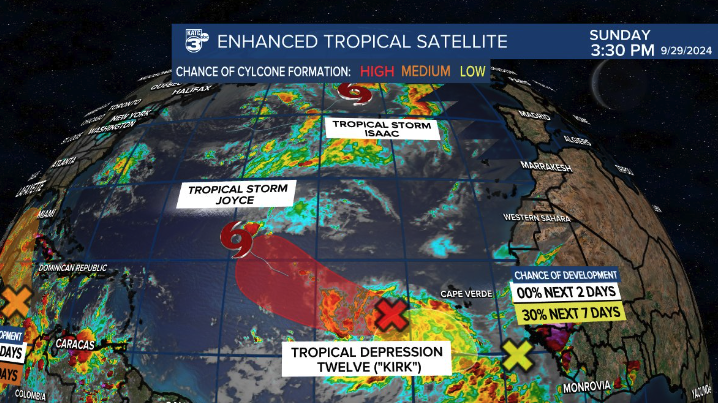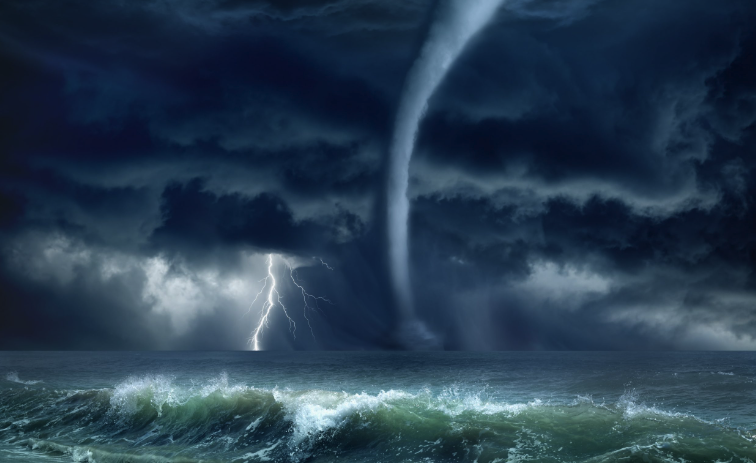How do Hurricanes form? The Atlantic Basin has been particularly lively as of late, with the National Hurricane Center (NHC) closely monitoring several potential systems that could coalesce into formidable weather phenomena. The competition among these tropical entities is fierce, with each vying for the title of Hurricane Kirk.
Current Systems Under Surveillance
As of now, the NHC has their radar set on three main systems that exhibit potential for tropical development. These systems are swirling around the Atlantic waters, each showing signs of becoming the next named storm.
- System A: Currently located near the Leeward Islands, this system is pushing west-northwest. Meteorologists are observing sustained winds and growing convection, indicating possible strengthening over the next 48 hours.
- System B: Found east of the Windward Islands, this system seems less organized but bears watching due to favorable environmental conditions that could spur rapid intensification.
- System C: Churning in the open Atlantic, this larger system is facing shear but is expected to find more conducive conditions for development as it drifts northwest.
Potential Impacts and Precautions
The proliferation of these systems has prompted local governments and communities to stay vigilant and prepared:
- Coastal Watch: Residents in the Caribbean and along the southern U.S. coastlines are advised to keep updated with the latest advisories from the NHC.
- Emergency Kits: It’s essential to have an emergency kit on hand, including items such as water, non-perishable food, flashlights, batteries, and medications.
- Evacuation Plans: Those in areas most likely to be affected should review their evacuation plans and know their routes and destinations in advance.

Technological Advances in Weather Prediction
The NHC’s surveillance is now more precise and reliable than ever before, thanks to advancements in technology and enhanced satellite imagery. These tools allow meteorologists to
pinpoint the formation
of tropical systems early and provide more accurate forecasts, giving communities ample time to prepare and respond.
Here are some of the cutting-edge tools that aid in hurricane prediction:
- GOES Satellites: These high-resolution satellites deliver real-time imagery, enabling the NHC to monitor developments minute-by-minute.
- Doppler Radar: This tool measures wind speed and precipitation, crucial for assessing storm strength and potential impact areas.
- Supercomputers: Advanced computing power models the data collected, offering predictions on storm paths and intensities.

Environmental Factors at Play
This bustling activity in the Atlantic Basin can be attributed to several environmental factors that foster the formation and growth of tropical systems:
- Sea Surface Temperatures: Warmer than average sea temperatures provide the necessary heat and moisture to fuel storm formation.
- Wind Shear: Low wind shear in certain regions means less disruption for developing storms, allowing them to strengthen.
- Atmospheric Disturbances: Waves of low pressure moving off the coast of Africa, known as African Easterly Waves, can trigger the development of tropical cyclones.
A Look Back at Historical Kirk Storms
The name Kirk has been assigned to tropical storms in previous years, with varying levels of impact:
- 2000: Tropical Storm Kirk caused minimal damage, dissipating quickly after formation.
- 2018: More recently, Tropical Storm Kirk brought heavy rainfall and gusty winds to the Lesser Antilles but remained a relatively moderate system.
Community Spirit and Preparedness
Amidst the looming threats posed by these tropical systems, there is a silver lining. The rise in natural disaster preparedness and community solidarity has been heartening. Local governments, along with volunteer organizations, are better equipped and more responsive than ever before. Neighbors lend helping hands, communities organize emergency readiness events, and overall, there’s a heightened sense of collective responsibility.
While the Atlantic Basin teems with activity and residents along the coasts stay watchful, it is reassuring to know that modern technology and communal spirit are on our side. The dedication of the National Hurricane Center, combined with timely updates and readiness, ensures that we can weather these challenges together.
So, as we keep an eye on these brewing systems and await the emergence of Hurricane Kirk